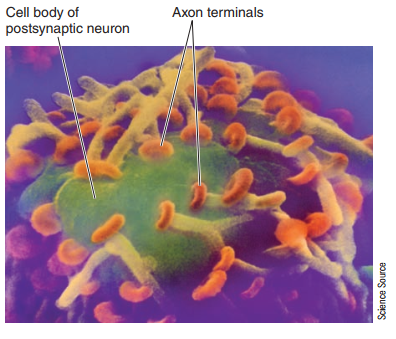
In the future, however, it may be possible to promote signifcant regeneration of damaged fbers in the CNS. Investigators are exploring several promising ways of spurring repair of central axonal pathways, with the goal of enabling victims of spinal-cord injuries to walk again and to regain control of bladder emptying. Here are some current lines of research:
■ Scientists have been able to induce signifcant nerve regeneration in rats with severed spinal cords by chemically blocking the nerve growth inhibitor dubbed Nogo, thereby allowing nerve growth enhancers to promote abundant sprouting of new nerve fbers at the site of injury.
■Other researchers are experimentally using peripheral nerve grafts to bridge the defect at an injured spinal-cord site. These grafts contain the nurturing Schwann cells, which release nerve growth-enhancing proteins.
■ Another avenue of hope is the discovery of neural stem cells. These cells might someday be implanted into a damaged spinal cord and coaxed into multiplying and differentiating into mature, functional neurons that will replace those lost.
■ Yet another new strategy under investigation is enzymatically breaking down inhibitory components in the scar tissue that naturally forms at the injured site and prevents sprouting nerve fibers from crossing this barrier.
■ Other researchers are taking a bionic approach, trying to create electronic devices that plug into the nervous system to bypass a broken connection in the spinal cord. The idea is to ultimately implant brain chips that could pick up the electrical message intended to command muscle movement, then to relay this message to a second device implanted in the spinal cord below the level of damage. This second device would stimulate the motor neurons to produce the commanded movement.